(Bologna 1638–1665) Salvator Mundi, possibly a self-portrait of the artist, oil on canvas, 36 x 28 cm, framed Provenance: Possibly Convent of San Domenico, Bologna, late 18th Century; Private collection, Bologna; Private European collection, until 2017; where acquired by the present owner We are grateful to Adelina Modesti for confirming the attribution and for her help in cataloguing this lot. The present unpublished small devotional quadretto da letto can be attributed to the celebrated Bolognese artist Elisabetta Sirani This painting is a typical example of the her early work, reflecting the influence of Guido Reni’s classical manner. Sirani’s own personal style, the expressive brushwork, fine colouring and harmonious chiaroscuro, was also beginning to manifest itself during this period, as is evident especially in the treatment of Christ’s hair, with its cascade of blonde curls. The present painting can be linked to a series of images of the Salvator Mundi which the artist began producing in 1658, when she first recorded in her work diary, published by her biographer Malvasia: ‘Una mezza figura d’un Salvatore, per donare al mio maestro da suonare’ (C. C. Malvasia, Nota delle Pitture fatte da me Elisabetta Sirani in: Felsina Pittrice. Vite de’Pittori Bolognesi, Bologna 1678, ed. by G. Zanotti, Bologna 1841, 2 vols. [Bologna 1967], 11, p. 394). This description fits a canvas now in the Fondazione della Cassa di Risparmio, Bologna. The same year, Sirani painted two ‘testin[e] di un Salvatorino’, one for ‘Padre Roffeni di San Paolo’, the other for an unidentified Dominican friar. The latter painting was also registered by Marcello Oretti in the late 1700s as being in the ‘Convento di San Domenico’, Bologna, (BCAB0, Marcello Oretti Ms B30, fol. 205.) and could possibly be the present Salvator Mundi under study. This is particularly of note, as the painting was previously in a private Bolognese collection. One can also compare Elisabetta Sirani’s Redentore benedicente, in the Pinacoteca Nazionale di Bologna, signed and dated on the reverse ‘Elisabetta Sirani f. 1664’, which, together with its pendant, the Madonna in preghiera, entered the museum from the Zambeccari Collection in 1883-1884 (see A. Modesti, Elisabetta Sirani ‘Virtuosa’. Women’s Cultural Production in Early Modern Bologna, Turnhout 2014, cat. no. 121, pp. 345-346). The model for these other versions of this theme, was most probably Elisabetta’s younger brother, Antonio Maria Sirani (born 1649), recognisable from the coloured drawing Head of a Youth in the Uffizi Gabinetto di Disegni e Stampe, Florence (no. 6299F), which Elisabetta presented to Prince Leopoldo de’ Medici of Florence as a gift in 1662. What is unique about the present Salvator Mundi, however, is that Elisabetta appears to have used her own features to represent Christ, which can be considered quite a confident and bold gesture by the young artist. A self-portrait in the Royal Collection, Windsor, drawn by Elisabetta in her youth, dated to circa 1655, in the same angled pose as Christ, reveals a similar full round face, inquisitive eyes with thin curved eyebrows, long nose and receding chin. The painting also attests to the continued popularity amongst the artist’s esteemed Bolognese clientele of her images of the young Christ which they placed for devotional purposes in their own homes. The theme of the youthful Christ as Saviour of the World, holding an orb or in the act of blessing, reflects the increased devotion to the young Christ, whose cult was to find full expression in seventeenth century Italy and Spain, reflected in iconography focusing on intimate portrayals of the Madonna and Child, as well as the infant Christ presented alone as Salvator Mundi or as a young Cristo Redentore. These small devotional images were to feature largely in Elisabetta Sirani’s oeuvre, for which she rightly became renowned. The present Salvator Mundi is therefore an important addition to Elisabetta Sirani’s oeu
(Bologna 1638–1665) Salvator Mundi, possibly a self-portrait of the artist, oil on canvas, 36 x 28 cm, framed Provenance: Possibly Convent of San Domenico, Bologna, late 18th Century; Private collection, Bologna; Private European collection, until 2017; where acquired by the present owner We are grateful to Adelina Modesti for confirming the attribution and for her help in cataloguing this lot. The present unpublished small devotional quadretto da letto can be attributed to the celebrated Bolognese artist Elisabetta Sirani This painting is a typical example of the her early work, reflecting the influence of Guido Reni’s classical manner. Sirani’s own personal style, the expressive brushwork, fine colouring and harmonious chiaroscuro, was also beginning to manifest itself during this period, as is evident especially in the treatment of Christ’s hair, with its cascade of blonde curls. The present painting can be linked to a series of images of the Salvator Mundi which the artist began producing in 1658, when she first recorded in her work diary, published by her biographer Malvasia: ‘Una mezza figura d’un Salvatore, per donare al mio maestro da suonare’ (C. C. Malvasia, Nota delle Pitture fatte da me Elisabetta Sirani in: Felsina Pittrice. Vite de’Pittori Bolognesi, Bologna 1678, ed. by G. Zanotti, Bologna 1841, 2 vols. [Bologna 1967], 11, p. 394). This description fits a canvas now in the Fondazione della Cassa di Risparmio, Bologna. The same year, Sirani painted two ‘testin[e] di un Salvatorino’, one for ‘Padre Roffeni di San Paolo’, the other for an unidentified Dominican friar. The latter painting was also registered by Marcello Oretti in the late 1700s as being in the ‘Convento di San Domenico’, Bologna, (BCAB0, Marcello Oretti Ms B30, fol. 205.) and could possibly be the present Salvator Mundi under study. This is particularly of note, as the painting was previously in a private Bolognese collection. One can also compare Elisabetta Sirani’s Redentore benedicente, in the Pinacoteca Nazionale di Bologna, signed and dated on the reverse ‘Elisabetta Sirani f. 1664’, which, together with its pendant, the Madonna in preghiera, entered the museum from the Zambeccari Collection in 1883-1884 (see A. Modesti, Elisabetta Sirani ‘Virtuosa’. Women’s Cultural Production in Early Modern Bologna, Turnhout 2014, cat. no. 121, pp. 345-346). The model for these other versions of this theme, was most probably Elisabetta’s younger brother, Antonio Maria Sirani (born 1649), recognisable from the coloured drawing Head of a Youth in the Uffizi Gabinetto di Disegni e Stampe, Florence (no. 6299F), which Elisabetta presented to Prince Leopoldo de’ Medici of Florence as a gift in 1662. What is unique about the present Salvator Mundi, however, is that Elisabetta appears to have used her own features to represent Christ, which can be considered quite a confident and bold gesture by the young artist. A self-portrait in the Royal Collection, Windsor, drawn by Elisabetta in her youth, dated to circa 1655, in the same angled pose as Christ, reveals a similar full round face, inquisitive eyes with thin curved eyebrows, long nose and receding chin. The painting also attests to the continued popularity amongst the artist’s esteemed Bolognese clientele of her images of the young Christ which they placed for devotional purposes in their own homes. The theme of the youthful Christ as Saviour of the World, holding an orb or in the act of blessing, reflects the increased devotion to the young Christ, whose cult was to find full expression in seventeenth century Italy and Spain, reflected in iconography focusing on intimate portrayals of the Madonna and Child, as well as the infant Christ presented alone as Salvator Mundi or as a young Cristo Redentore. These small devotional images were to feature largely in Elisabetta Sirani’s oeuvre, for which she rightly became renowned. The present Salvator Mundi is therefore an important addition to Elisabetta Sirani’s oeu
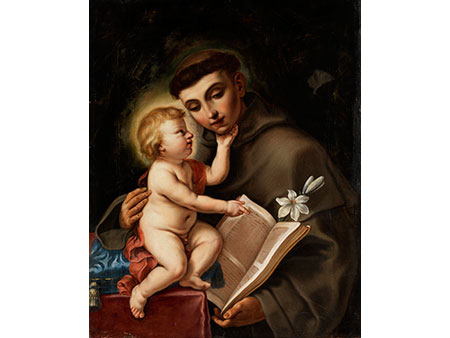
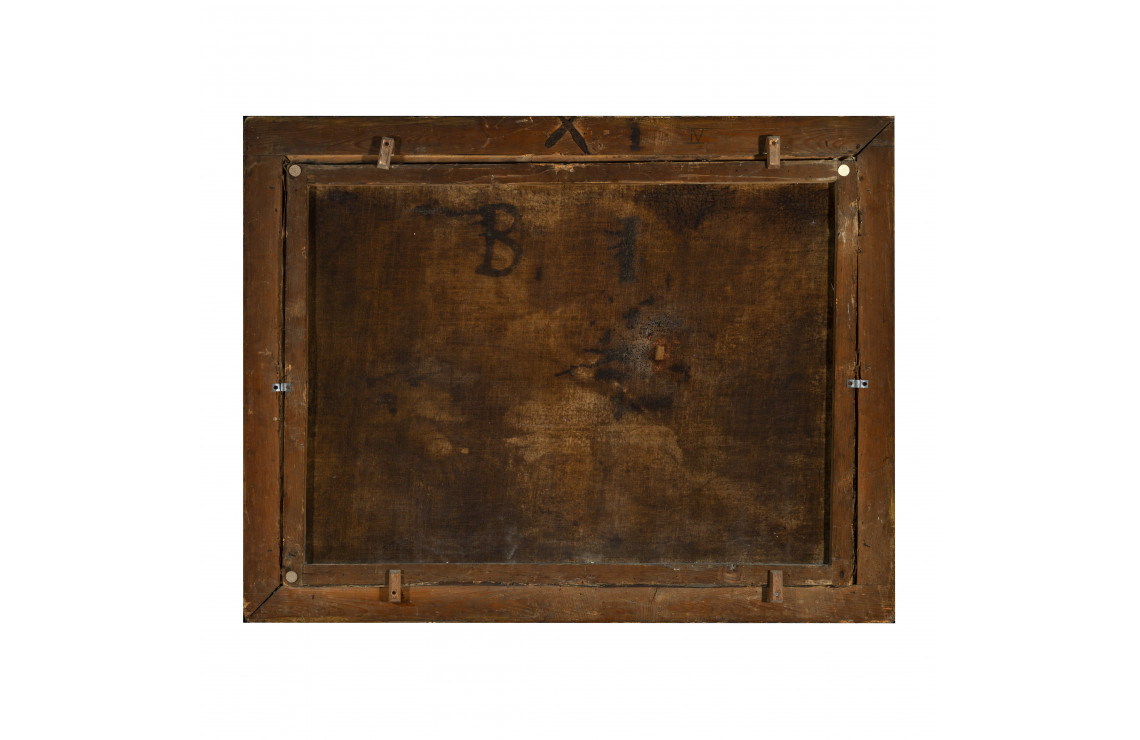

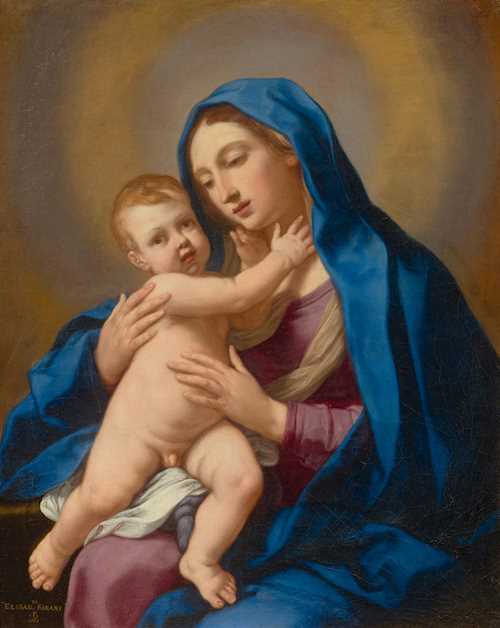



.jpg)
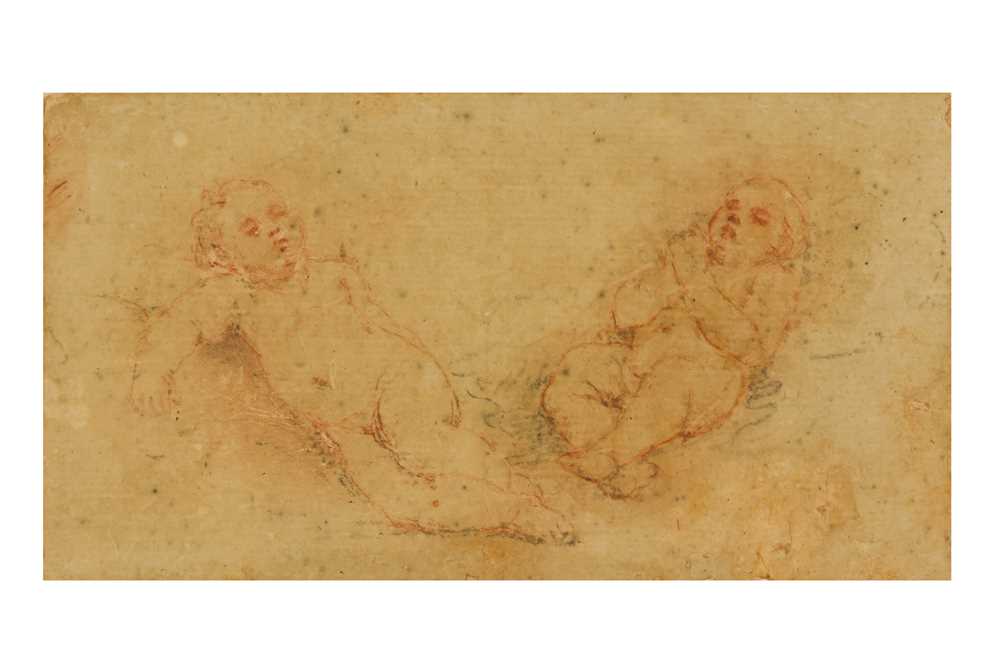

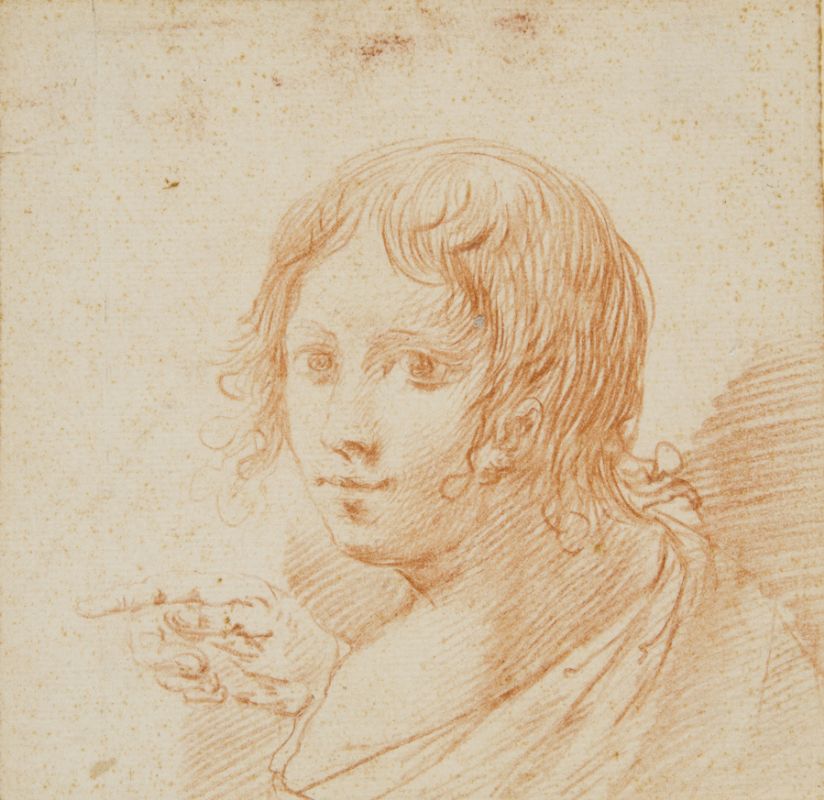




Testen Sie LotSearch und seine Premium-Features 7 Tage - ohne Kosten!
Lassen Sie sich automatisch über neue Objekte in kommenden Auktionen benachrichtigen.
Suchauftrag anlegen